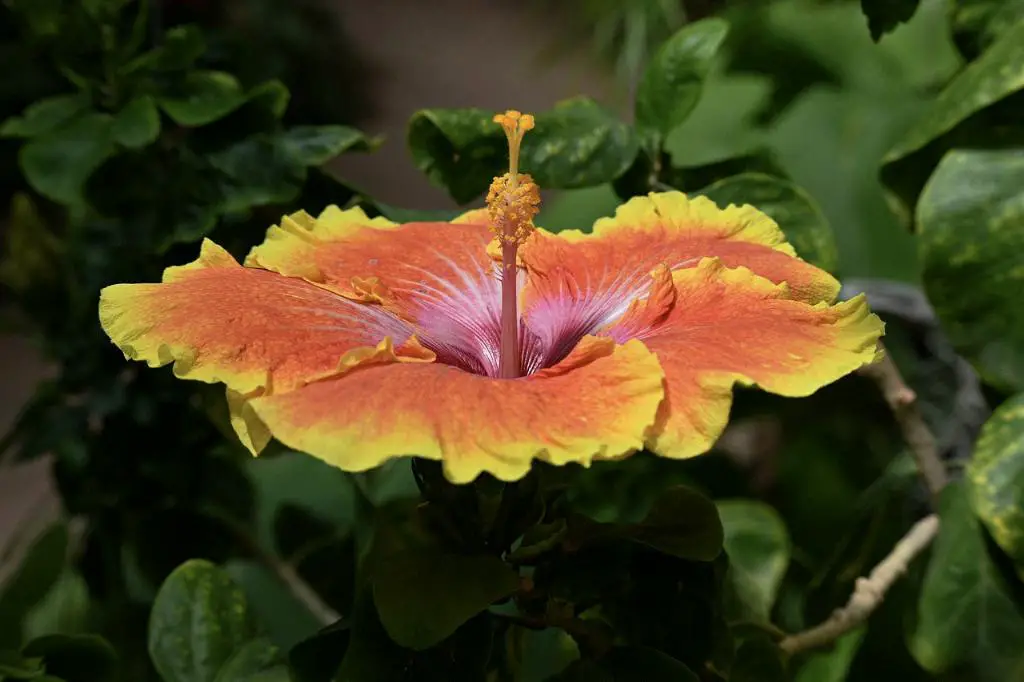When it comes to the size of hibiscus bushes, there are a few key factors to consider. The genus name of these beautiful plants is Hibiscus, and they typically grow to a height of 3 to 7 feet. In terms of width, hibiscus bushes can span from 2 to 5 feet, providing a lush and full appearance in your garden.
Appearance of Hibiscus Bushes
One of the most appealing aspects of hibiscus bushes is their vibrant flower colors. These stunning plants can produce flowers in shades of pink, red, and white, adding a pop of color to any outdoor space. Additionally, the foliage of hibiscus bushes can range from blue/green to purple/burgundy, offering a dynamic contrast to the bright blooms.
Cultivating Hardy Hibiscus
When it comes to planting and growing hardy hibiscus, there are a few essential tips to keep in mind. These plants thrive in well-drained soil and prefer full sun to partial shade. By providing them with the right growing conditions, you can encourage healthy growth and abundant blooming.
Optimal Growing Conditions
Creating the ideal environment for hibiscus bushes involves ensuring they receive an adequate amount of sunlight. These plants do best in locations with full sun to partial shade, allowing them to photosynthesize efficiently and produce vibrant flowers and foliage.
Pruning and Maintenance
To keep your hibiscus bushes looking their best, it’s important to incorporate regular pruning and maintenance into your gardening routine. Trimming back overgrown branches and deadheading spent flowers can promote healthy growth and encourage continuous blooming.
Watering Needs
Proper watering is crucial for the health of hibiscus bushes. These plants benefit from regular watering, especially during hot and dry periods. However, it’s essential to avoid overwatering, as this can lead to root rot and other issues.
Fertilizing Hibiscus Bushes
Applying fertilizer to hibiscus bushes can help promote robust growth and abundant flowering. It’s recommended to use a balanced fertilizer formulated for flowering plants, following the instructions on the product label for best results.
Dealing with Pests and Diseases
Like many plants, hibiscus bushes can be susceptible to pests and diseases. Keeping an eye out for common issues such as aphids, scale insects, and fungal diseases can help you address problems promptly and prevent them from spreading.
Winter Care for Hardy Hibiscus
During the colder months, it’s important to provide winter care for hardy hibiscus to ensure their survival. In regions with harsh winters, consider mulching around the base of the plants to protect the roots from freezing temperatures.
Benefits of Growing Hibiscus Bushes
Aside from their stunning appearance, hibiscus bushes offer a range of benefits to gardeners. These plants can attract pollinators such as bees and butterflies, adding to the biodiversity of your garden and supporting local ecosystems.
Landscaping with Hibiscus Bushes
Whether you’re looking to create a vibrant focal point in your garden or add a splash of color to your landscaping, hibiscus bushes are a versatile choice. Their bold flowers and lush foliage can enhance any outdoor space, providing year-round interest.

Conclusion
In conclusion, hibiscus bushes are a beautiful and rewarding addition to any garden. With the right care and attention to their growing requirements, these plants can thrive and bring joy to gardeners with their vibrant flowers and lush foliage.
